Glittering Stones » Gemstone Reports » Geomological Institute of America Lab Reports (GIA)
WELCOME TO THE GIA LABORATORY
The Gemological Institute of America (GIA) Laboratory is the world’s most trusted name in diamond grading and gemstone identification.
The GIA Diamond Grading Report, Diamond Dossier and Gemological Identification Reports offer unmatched assurance of a gem’s quality and authenticity.
With facilities in New York, California, Bangkok, Mumbai, Johannesburg, and Gaborone as well as six international service centers, the GIA Laboratory is regarded as the world’s foremost authority in gemology.
» How GIA identifies colored stones
» How GIA identifies and classifies pearls
How GIA Grades Diamonds
The GIA set the standard for diamond grading and gemological identification, and their grading system serves as the international gem and jewelry industry's benchmark credentials.
Grading Diamonds :
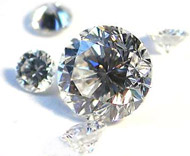
Anonymity: Client anonymity during the grading process is essential. Almost immediately after the diamond is received, it is placed in a custom designed, transparent storage case, and all reference to the submitting client is removed. Client information is completely masked within the software diamond graders use to enter their assessments.And this information is only attached to the diamond when the item is matchedwith its corresponding report and prepared for return to the client.

Objectivity and independence are the hallmarks of all GIA reports and services, and GIA has elaborate processes in place to ensure a diamond’s anonymity through the grading process. Upon arrival to the Laboratory, every diamond is placed in a custom designed, transparent storage case, and all references to its owner are removed or concealed. It is assigned a bar-coded label with a unique internal identification number that is used to track it throughout the process. Furthermore, client information is masked within the software diamond graders use to enter their assessments. We ask that our clients assist us in this process by submitting items in parcel papers free of information that identifies them as the client or refers to grading information.
Weights and Measures :
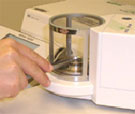
Diamonds are weighed with an electronic micro-balance that captures their weight to the fifth decimal place. An optical measuring device determines their proportions, measurements, and facet angles.
Grading Color
 Color in the diamond trade usually refers to the amount of yellow in a stone, but can also indicate brown or gray and sometimes all three. The most treasured diamond color is actually the " colorless " grade -- one without any color at all.
Color in the diamond trade usually refers to the amount of yellow in a stone, but can also indicate brown or gray and sometimes all three. The most treasured diamond color is actually the " colorless " grade -- one without any color at all.
Since light source and background can have a significant impact on the appearance of color, the diamond's color is graded in a standardized viewing environment. Color graders submit their independent opinions into the system. During this phase, graders are not privy to color opinions entered previously. The color grade is determined when there are sufficient agreeing opinions.
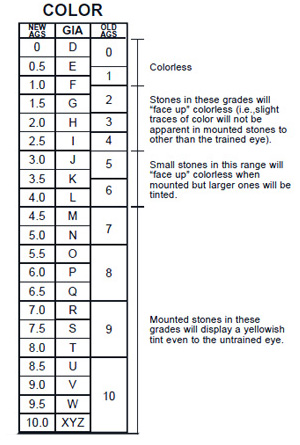
Grading Clarity and Finish :
How GIA Grades Clarity and Finish: GIA is the laboratory known for strict grading of diamond clarity.
Clarity is graded with 10x magnification under standard viewing conditions. The preliminary grader carefully examines the diamond to locate clarity/finish characteristics and evidence of any diamond treatments, such as fracture filling or laser drilling.
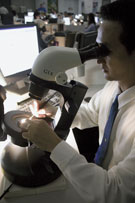
The preliminary grader assigns an opinion of the diamond’s clarity, polish and symmetry, then plots the clarity characteristics on a diagram most representative of the diamond’s shape and faceting style, which is selected from a database of hundreds of digitally stored diagrams. During this step, the grader verifies all previously captured weight and measurement data and assigns written descriptions of the diamond’s culet and girdle thickness. For a round brilliant cut diamond, this measurement data, along with polish and symmetry assessments, is used to determine its GIA Cut Grade. Additional steps are also taken during this grading process, and all others, to check and double check for indicators of known diamond treatments and synthetics.
A second grader then carefully and thoroughly examines the diamond to locate and identify clarity/finish characteristics and, again, the presence of any diamond treatments. This grader performs all the same grading steps done by the previous grader and then enters an independent opinion on clarity/polish/symmetry.
Depending on the diamond’s weight, quality, and the agreement of grading opinions, additional quality assurance process steps are also performed. More experienced staff gemologists may review all of the previous grading information and render independent clarity/polish/symmetry opinions. Grading results are finalized once there are sufficient agreeing opinions.
Grading Cut :
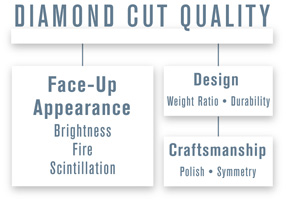
GIA provides a cut quality grade only for standard round brilliant diamonds that fall in the GIA D-to-Z color range.
After the color and clarity grading process, the diamond’s proportions (measurements and facet angles), along with polish and symmetry descriptions, are used to determine its GIA Cut Grade. A diamond’s brightness, fire, scintillation (sparkle and pattern), weight ratio, and durability, as well as polish and symmetry, are all considered within this final assessment of cut quality.
Inspection Care and Handling :
At every step of the grading process, special inspection, care, and handling procedures are in place to protect a diamond’s identity and ensure the diamond is managed with the utmost care.
Inventory Control and Routing :
GIA’s Inventory Control Department serves as the hub for Laboratory operations. Between grading process steps, a diamond is distributed from and returned to this department, ensuring that the distribution of diamonds to graders is completely random. This is just one of several critical measures in an independent and impartial grading process.
Every diamond is tracked electronically so that the Laboratory can pinpoint its exact location at any time, and review each step during the grading process. With thousands of diamonds, and hundreds of diamond graders, the routing and tracking of the GIA Laboratory’s inventory requires a highly trained and alert staff, combined with the best support technology can offer.
How GIA Identifies Colored Stones
GIA receives a varied and complex range of items for identification; everything from colored stones and pearls, unusual carvings and jewelry, to the latest in synthetics, and stimulants, as well as treated gems. A significant area of activity involves the origin of color in gemstones, most notably, but far from limited to, diamonds, rubies, and sapphires.
Inspection,Care and Handling Procedures :
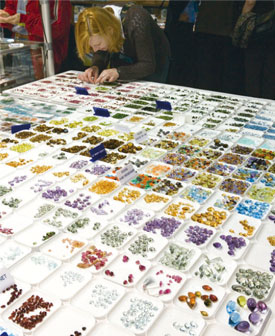
GIA applies the same item identification and tracking procedures to gem identification as it does to diamond grading. Each item is assigned a bar-coded label with a unique internal identification number that is used to track it throughout the process. And at every step, special inspection, care and handling procedures serve to protect a gem’s identity and ensure it is managed with the utmost care.
Weights and Measures :
This is the first stop for any gemstone. Loose gems are weighed with an electronic micro-balance that captures the weight to the fifth decimal place. Loose polished stones are also measured with an optical measuring device to determine their proportions, measurements and facet angles. Mounted stones are measured, but not weighed.
Identification :
Items are then transferred to the Identification Inventory Control department for distribution to trained and experienced gemologists for servicing. Once an item is received by an initial gemologist, its recorded weight and measurements are verified, or if the item is mounted or strung, the gemologist will use manual measuring devices to determine and record necessary measurements.
Employing state-of-the-art technology in his research and identification efforts, the gemologist then performs a variety of analytical investigations, including a microscopic examination of the item, and performs all the tests required to properly determine its gemological identity and detect any treatments.
After that, the item is transferred to a second gemologist, who independently performs all necessary observations and testing. Depending on the identity and nature of the item, it may be examined by additional gemologists and research specialists.
Report Processing and Item Return :
Reports are generated after all results are finalized and services have been completed. All GIA Reports are examined and proofread to ensure quality before being sent to the client.
Last, the item is placed in its original container, joined with its report, and goes through final inspection and testing to ensure that the same submitted item is returned to the client.
Items are returned either in person through the Client Services department, or via courier through the Transport Services department. All information recorded for an item remains stored in the GIA Laboratory’s permanent database for future reference.
For information on how you can become a well-informed colored stone buyer, take GIA’s interactive colored stone tutorial.
How GIA Identifies and Classifies Pearls
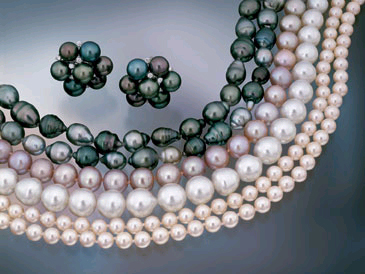
Although the GIA Laboratory is most recognized as the world’s foremost authority in diamond grading, it has been a leader in the identification and classification of natural and cultured pearls since 1949.
GIA has also contributed to the revision of the FTC’s pearl guidelines for the jewelry industry and is responsible for working with major pearl companies globally to develop comprehensive standards for describing pearls. These standards are the GIA 7 Pearl Value Factor, Pearl Species, Shape, Surface, Color, Nacre Thickness, Matching, and Luster.
Inspection, Care and Handling Procedures :
GIA applies the same item identification and tracking procedures to all pearls, as it does for colored stones and diamonds. Each item is assigned a bar-coded label with a unique internal identification number that is used to track it throughout the process. And at every step, special inspection, care, and handling procedures ensure items are managed with the utmost care.
Weights and Measures :
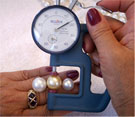
This is the first stop for any item submitted for pearl services. Pearls are counted by hand and then weighed with an electronic micro-balance that captures the weight in grams (mounted or strung), carats (loose), or carats and grains (loose natural). Pearls are measured using special digital calipers.
Identification and Classification :
 Items are then transferred to the Identification Inventory Control department for distribution to trained and experienced gemologists for servicing. Once an item is received by an initial gemologist, its recorded weight and measurements are verified. The gemologist identifies pearl types, mollusks and any detectable treatments using the standard gemological testing and advanced testing equipment, including real-time x-radiography, UV-Vis reflectance spectroscopy and XRF. Real-time x-radiography equipment is used to measure the nacre thickness of bead-culturedpearls.
Items are then transferred to the Identification Inventory Control department for distribution to trained and experienced gemologists for servicing. Once an item is received by an initial gemologist, its recorded weight and measurements are verified. The gemologist identifies pearl types, mollusks and any detectable treatments using the standard gemological testing and advanced testing equipment, including real-time x-radiography, UV-Vis reflectance spectroscopy and XRF. Real-time x-radiography equipment is used to measure the nacre thickness of bead-culturedpearls.
The gemologist determines color and classifies the other factors under a controlled viewing and lighting environment, using a comprehensive set of pearl masters. The pearl master sets include a hue circle and various color grids to determine color, and type-specific master sets of strands to classify luster, surface and matching.
After that, the item is transferred to a second gemologist, who independently performs all necessary observations and testing. Depending on the identity and nature, the item may be examined by additional gemologists and research specialists.
Report Processing and Item Return
Reports are generated after all results are finalized and services have been completed. All GIA Reports are examined and proofread to ensure quality before being sent to the client.
Last, the item is placed in its original container, joined with its report, and goes through final inspection and testing to ensure that the same submitted item is returned to the client.
Items are returned either in person through the Client Services department, or via courier through the Transport Services department. All information recorded for an item remains stored in the GIA Laboratory’s permanent database for future reference.
Museum

The GIA Museum strives to increase awareness of gems, jewelry and gemology through exhibits and lectures that educate and engage the public and the industry.
The Museum actively builds its collection for education, research and display. As a nonprofit, 501(c)(3) organization, GIA gratefully accepts charitable gifts of gems and jewelry.
The GIA Museum’s current focus is building the Historical Collection, a sophisticated collection of jewelry, objects d’art and gemstones of known provenance from earlier cultures and periods. When you donate part of your own treasured collection to the GIA Museum, you’ll be helping to tell the fascinating story of gemstones and jewelry through the ages to people around the world.
The Rotunda GalleryThe Rotunda gallery at GIA headquarters in Carlsbad, CA features ever-changing exhibits from the museum. |
 |
Facets of GIA on DisplayThe Rotunda gallery houses this current exhibit at GIA headquarters in Carlsbad, CA. |
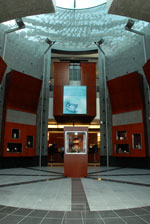 |
Apex GalleryThe Apex Gallery in Carlsbad, CA provides a spacious ambiance for gem, jewelry and mineral displays. |
 |
The AtriumThe Atrium of GIA headquarters offers additional exhibition space for the museum. |
 |
Gem and Jewelry DisplaysMuseum displays also line the hallways of the education building at GIA headquarters. |
 |
Photography ExhibitsPhoto essays by GIA staff members on display in the Carlsbad Education building. |
 |
Photography ExhibitsThe photographs of Bill Atkinson line a hallway in the Carlsbad Education building. |
 |
NOVEMBER BIRTHSTONE - CITRINE
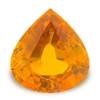
COMMEMORATIVE EVENT - 13th Anniversary
KEYWORDS - Success, Abundance, Personal Power
ALSO KNOWN AS - Merchant's stone, Success stone
COLORS - Pale yellow to brown
OCCURRENCE - Brazil
COLOR ZONING - Tiger stripes or Zebra stripes


